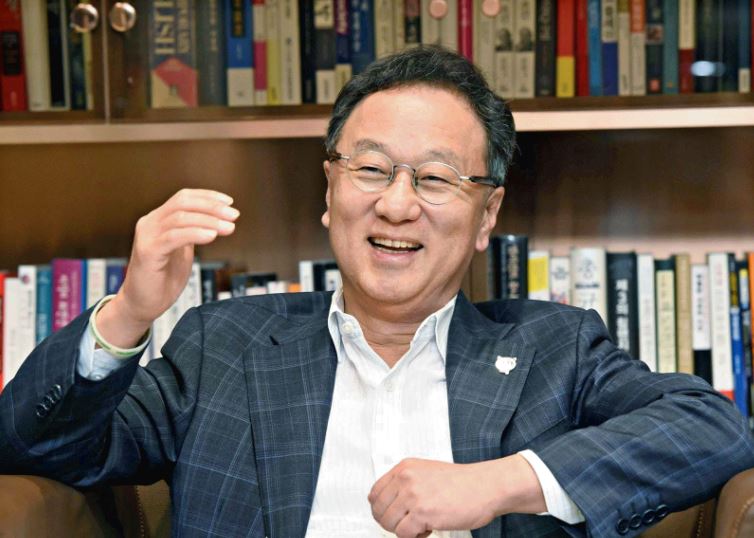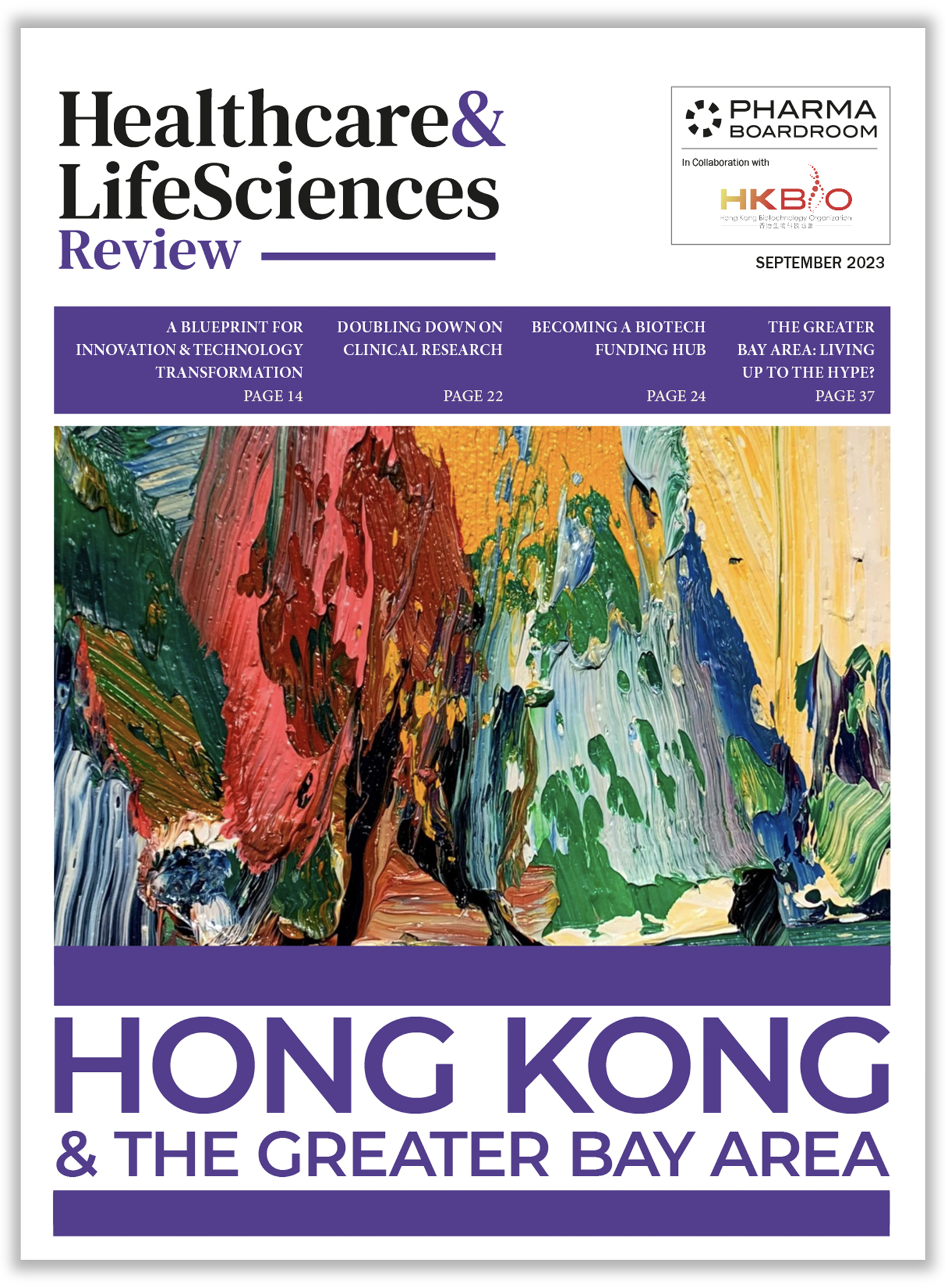Woosok Lee, CEO of Kolon Pharma, Kolon Life Science and Kolon TissueGene, offers his insights into the potential of their blockbuster product Invossa which could exceed USD five billion of revenues in the USA following its approval. Mr Lee also clarifies Korea’s position within gene therapy R&D and explains Kolon’s strategy for lowering the cost of innovative gene therapy products.
Mr Lee, you are the CEO of three standalone life sciences organisations within the Kolon Group: Kolon Pharma, Kolon Life Science, and Kolon TissueGene. What distinct advantage is there of keeping these entities separate, rather than combining them into one overarching Kolon entity?
Kolon Group’s health care business unit is composed of three subsidiaries: Kolon Pharma, Kolon Life Science, and Kolon TissueGene. Kolon Pharma has a nearly 60-year history and focuses on generic drugs and licensed in products. Kolon Pharma has developed outstanding products with its own technology and also co-developed with global pharmaceutical companies like Chiesi, Hisamitsu and Organon.
Kolon TissueGene was founded in 1999. The Kolon Group’s spearheading efforts to be the global leading cell and gene therapeutic company led the establishment of Kolon TissueGene in the United States, aiming to increase the synergy for R&D and acquire global research achievements by tapping into excellent research institutes.
While Kolon TissueGene and Kolon Life Science have been co-developing the world’s first osteoarthritis (OA) cell-mediated gene therapy drug ‘Invossa’ for over 20 years, there are some different directions between Kolon Life Science and Kolon TissueGene. Kolon TissueGene is conducting clinical trials and commercialization in US and EU and also developing additional indications for the treatment of other musculoskeletal diseases, including rheumatoid arthritis, diseases of the spinal discs, and OA for animals. Conversely, Kolon Life Science has been conducting clinical trials and moving towards commercialization in Asia. Moreover, Kolon Life Science is focused on continuing our R&D efforts in the field of cell and gene therapy. We reinvest a significant portion of our profit back into R&D with plans for introducing new drugs offering pain relief and vaccines for cancer patients.
What differentiates your R&D activities from other companies engaged in gene and cell therapy development?
Gene therapy is usually focused on rare disease. However, Kolon Life Science’s pipeline is not focused on rare disease, but more general disease. Our product, Invossa, is an exceptional case: it is focused on osteoarthritis which has a large patient population. Moreover, most of the cell therapies are autologous; our product is an allogenic cell therapy. Early in the development of Invossa, we understood the need for our facility to produce large quantities of the highest quality product. Now, we manufacture Invossa in-house and have a target of 100,000 vials to meet the increasing demand for our innovative product. While it is not an on the shelf product, it can be delivered from the factory and to the patient within 24 hours.
Kolon Life Science has three projects in its development pipeline including a new concept of analgesic therapy for neuropathic pain. In 2019, we are planning a Phase 1/2 clinical in the United States to explore the safety and effectiveness of its investigational neuropathic pain. The next candidate is an anti-cancer drug and we are planning to submit the IND in 2020.
How would you assess Korea’s position in the field of gene therapy?
The Korean government has drawn up an ambitious long-term roadmap to boost Korea into the top tier of bioscience powers. Under the plan, it has tried to expand its support for the development of cell and gene therapy as well as create funds to support bio start-ups. The private sector is also actively seeking collaboration partners to develop and commercialize new materials and other biotech products faster than its foreign competitors. As a consequence of this endeavour, I believe the overall level of R&D in gene therapy is the second best in the world.
For Kolon specifically, we have over 20 years of unique experience and have already commercialised a product in this field, providing it with unmatched know-how. As a result, we are regarded as a leading player in this area. Furthermore, we will continue to develop our innovative gene therapy products with Korea’s leading companies/institutions, as well as in other countries where we can add value.
How will you structure the company to compete in the global markets?
For the past 20 years, we have conducted all of the R&D activities in-house, investing significant capital and resources. We launched the world’s first osteoarthritis gene therapy drug ‘Invossa’ last year. Consequently, we are a fully integrated company for Invossa. Nevertheless, we have reached the conclusion that this approach is sub-optimal, and thus we will take a different path with the remaining pipeline candidates. We do not believe this to be the best way to develop cell and gene therapy.
Cell and gene therapies were also a low priority for big pharma until very recently. Nowadays, this area is receiving a lot of interest. In this regard, I believe that for our idiopathic pain or oncology virus, continuing the process up until manufacturing is neither optimal nor viable. We have tried to find opportunities at an early stage with big pharma, or anyone else.
I cannot prejudge the situation, but I believe that we will establish global partnerships in the global market. We have signed several sales/license contracts with global partners like Mundipharma for the domestic market and Japan. Furthermore, we are under discussions with global partners for the international markets.
You intend to launch Invossa into the US market by 2023. What will be the impact of this milestone for Kolon Life Sciences?
Our most ambitious goal from the US clinical studies is to receive the label of DMOAD: disease modifying osteoarthritis drug. There is currently no such drug. That means that all current drugs are merely pain relievers. We are confident that Invossa will be granted the first label for DMOAD as we will have sufficient data from the trials on 1,020 patients at over 50 clinical sites across the US.
Market research was conducted by consulting firms to evaluate Invossa’s market potential. They estimated that peak sales after approval in the USA alone would be over USD $3billion. If we receive the label of DMOAD, revenue will rise to over USD $5billion.
In order to successfully enter the U.S. market, we are looking for a partner that can effectively strengthen Invossa’s value in the United States. Subsequently, a launch in the European market after gaining approval from the FDA will take place. We already held a meeting with the EMA several years ago and can apply for the approval based on the data from the FDA studies.
One of the main challenges for regenerative medicine is the high costs involved at this time. What is your assessment on the outlook of costs for such treatments being reduced in the future, which will in turn greatly increase accessibility for patients?
This is a hurdle which every biotech company will have to overcome. The production cost of Invossa is relatively high compared to a chemical product. Innovating within the manufacturing process is our strategy to cut the production cost.
We have been developing state-of-the-art three-dimensional(3D) cell culturing process. We inserted micro-carriers into the reactor. Invossa is a chondrocyte cell and sticks to the beads. Theoretically, this 3D cell process can reduce the cost of manufacturing by 80 percent. So far, the results have been very promising, but there is still a long way to go before we can roll this out within large scale manufacturing.
The global companies are very interested in our mass production process because of the market size for Invossa. They want to know annual production capacity, and at what cost. While we are not 100 percent sure what the final cost reductions will be, we at least have a solution to today’s problem with the cost of Invossa and similar treatments. This is made possible by the mass production capabilities of Invossa.
Invossa is undergoing phase III clinical studies in the USA; their clinical material is produced by Lonza in Singapore. In other words, logistics is not a problem. We will provide Invossa from our facility to the global market. Once the price is reduced sufficiently, it will truly have a global reach.
What would you want our audience to think of when they hear of Kolon Life Sciences?
I would like them to remember Kolon Life Sciences and Kolon Tissue Gene as pioneers who succeeded with a cell and gene therapy product after over 20 years of R&D to become the global leader in cell and gene therapy.







